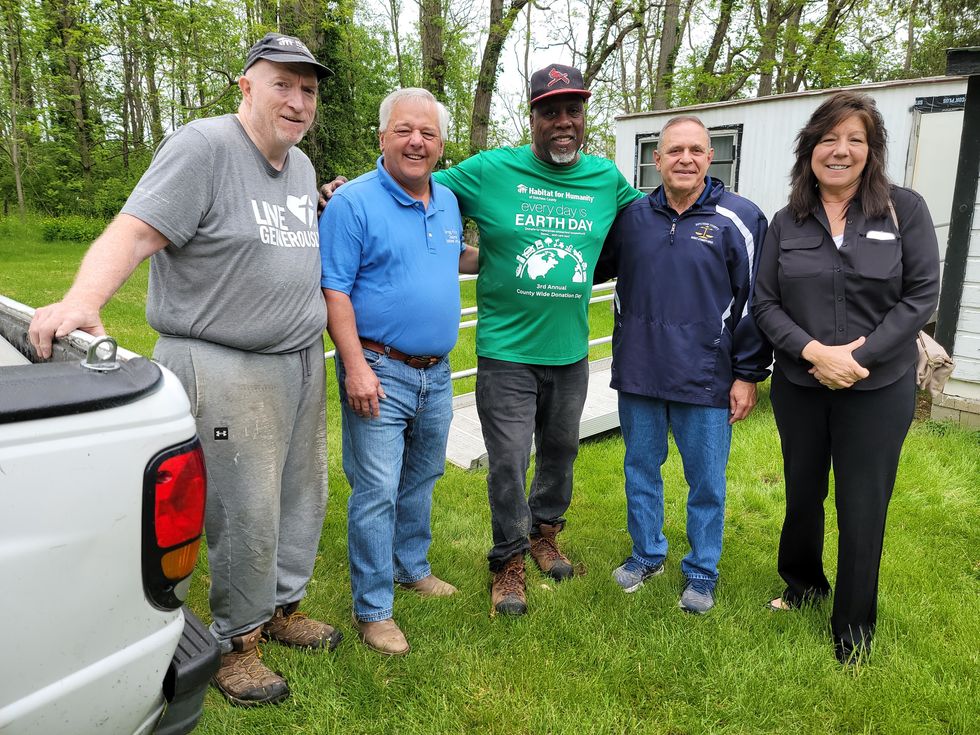NORTH EAST — Just about a year ago, The Millerton News and The Lakeville Journal published their annual Towns and Villages edition with the theme being affordable housing or the lack thereof. Housing in this area is expensive for many of the people who work here, both in buying and renting homes.
Upkeep on homes bought in the past can also be expensive, and another set of problems is presented as people age: Retirement income is often much lower than the working income. If a couple both work and one of them dies, their income may be cut in half.
Pricing for everything is going up, including building materials and utilities. Labor costs are rising, and as people age, they may not be able to make their own repairs. Also, as pointed out by Dutchess County Legislature Chair Gregg Pulver (R-Pine Plains), many older residents just aren’t used to asking for help.
Habitat for Humanity, along with other agencies, works to help with all of these struggles. Many people don’t realize that Habitat for Humanity has grown and changed over the years. It fights to be able to move with the times, to help with situations that have become more problematic, and it is adept at finding solutions for a myriad of situations.
On Saturday, May 20, Pulver and Sue Serino, former state senator for the 41st District, made a stop at a site in Millerton where a crew from Habitat was installing a ramp to make an older mobile home wheelchair-accessible.
Pulver and Serino brought pizza, salad and drinks to the work crew, and the ensuing conversation turned to the fact that this was a temporary improvement, as this home is slated to be replaced in the not-too-distant future with a new mobile home by Habitat. The paperwork has been submitted, and the requirements have been met. Pulver, Serino and construction director John Heard were all excited about the prospect.
According to Maureen Lashlee, CEO of Habitat for Humanity of Dutchess County, said that there are stipulations to its Mobile Home Replacement Program: The mobile home must be on property owned by the owner of the home, and it must be the primary residence of the owner. It must also have been built on or before 1970.
Altogether, the plan is to replace five mobile homes, and then to reassess the situation. There are about 300 mobile homes sitting on their own land in this area, and those built before 1970 were not covered by regulations and may not be safe. Lashley has hopes that more will follow, and that possibly in the future this could apply to privately owned mobile homes that are in installed mobile home parks.
Habitat for Humanity has long been known for repairing homes as well as building homes for those in need. According to Lashlee, the need is greater than ever. Two parcels of land in this area have been acquired through the municipalities; Habitat is hoping permits will be issued, and that it will be able to build modular homes on them. The traditional home is a single-family dwelling; depending on the square footage, it can be three or four bedrooms, one or two stories high.
Lashlee said that single family homes can’t solve the current crisis and that the answer lies in multi-family dwellings and other less conventional means such as accessory dwellings. When people have to leave their homes or can’t find suitable homes to occupy, there is family and community loss. “We need to find new ways of looking at the situation,” she said. “We need to listen to people, to what they need.”
There are many ways that people can help Habitat for Humanity, which relies hugely on volunteers. It has stores that sell furniture and home goods, and it accepts donations for the stores; money can be donated; and volunteers are always needed for the actual building and repair work. Heard said: “Anyone can volunteer. You don’t have to have experience in building. You can even volunteer to cook lunch for the building crew.”








 Submitted
Submitted






